Today was another split activity day, with Mum going in to Florence while I headed further along the coast to Cinque Terre.
Having said I goodbyes for the day, Mum board the coach to Florence while I headed to my tour meeting point
.
After her arrival in Florence and with a bit of time to spare before she needed to be at the museum, Mum decided to have a little bit of a wander around the cobbled stoned streets. Mum reports that the Duomo (Santa Maria del Flores) is still standing and is still a popular tourist attraction. The Duomo is a good example of Renaissance architecture. It was built in the 1430s by a fellow named Brunelleschi and was constructed without the use of internal scaffolding. As the line to get in was quite long, I don't believe she ended up going in, however I’m fairly sure she spent a bit of time admiring it.
At about noon, it was time head to the main event – the Uffizi Museum. The Uffizi Museum is one of the oldest and most famous museums of the western world. Paintings in the museum include Botticelli’s The Birth of Venus and Da Vinci’s The Annunciation. Last time Mum had visited the museum, she only had an hour to see the whole thing and as such had to rush through. This time, with a timed ticket, she was able to view the many masterpieces at her leisure. In even better news, it would appear the museum has caught up with the times and now allows non flash photography of its pieces – last time we visited it, we got in trouble for wanting a photo of Venus.
After perusing the art works for a while, she continued her walk around the city and begun her mission to break a 200 euro note she had managed to get her hands on
. After trying quite a few banks and seeking some advice from the guide, she headed to the nearest pub and then proceeded to purchase a bottle of beer using the 200 euro note. On the walk back to the meeting point for the coach, she had a quick looks at the Church of Santa Croce, which houses the tombs of Michelangelo and Dante among others.
Meanwhile on the coast, I was making my way along the coastline that gives Cinque Terre its main draw card.
There are three ways to see Cinque Terre – on a ferry, on a train, or braving the winding roads to drive it. For most of the trip we opted for the ferry.
After an hour drive from where the ship was docked, we arrived at Porto Venere, the starting point for our ferry ride. On the edge of town is the Church of San Petro, a very old stone church. From next to the church you can get some good views of the ragged and steep coastline that makes up this part of Italy
.
Working our way north from Porto Venere, the ferry first stopped at the town of Riomaggiore, although we didn’t hop off. Due to the timing of the ferries, if we had gotten off, we would be waiting up to an hour for the next one to come along. It is the most southern village of the five Cinque Terre and is known for its wine and character. It was also the starting/finishing point for the Via dell Amore aka the Love Trail when it was opened.
Our first off ferry stop was Manarola. It is thought to be oldest town of the five and speaks a slightly different dialect to the other Cinque Terre towns. It was also the starting/ending point for the Love Trail. Just before we left for the ferry, the town was struck by really high winds. While it was amusing to see tourists helping store owners hold their shop awnings down, it wasn’t so fun having the sand/dirt/sticks flung into your legs. The winds only lasted about 10 minutes and then were gone and quickly as they came
. We later found out that the wind was heading south.
The final stop by ferry was Vernazza. It is the fourth town heading north, has no car traffic, and is said to be one of the truest "fishing villages" on the Italian Riviera. In October 2011, the town was struck by torrential rains, massive flooding, and mudslides. The downpour and mudslides left the town buried in over 4 metres of mud and debris, causing over 100 million euro worth of damage. The town was evacuated and remained in a continued state of emergency.
This was also where we had our lunch stop and boy did lunch turn out to be controversial. I’m not sure whether the waiter was just a nasty person or whether he was having a bad day. It all started when we asked if we could either move to a table in the shade or get the umbrellas put up (half the group were sitting in the midday sun). Begrudgingly they put the umbrellas up. Then there was the 'oil and vinegar’ incident. Normally when the restaurant provides bread, you get some local olive oil and balsamic vinegar too, except at this restaurant where when we asked about it, the answer we got was ‘we’re not obliged to provide it’, well that’s all well and good but we didn’t really feel like eating dry salty bread
. The rest of the meal went down hill and overall lunch left a bad taste in our mouths – both physically and mentally.
Our final stop in Cinque Terre was Corniglia. The town is not directly adjacent to the sea. Instead, it is on the top of a promontory about 100 metres high, surrounded on three sides by vineyards and terraces and the fourth side descends steeply to the sea. This town isn’t really accessible via the ferry, so we rejoined our guide and got to experience the narrow, winding roads of the area. If you do want to use the ferry, it is necessary to climb the Lardarina, a long brick flight of steps composed of 33 flights with 382 steps The town is mentioned in a famous novella of Giovanni Boccaccio's Decameron and in the novel The Invisible Circus by Jennifer Egan.
On the way back to the dock at Livorno, we had a quick stop in Pisa to check on the status of the Leaning Tower and the Field of Miracles. I am able to report that the tower is still leaning and best of all people are still doing the ‘look at me I’m holding it up, pushing it down, being crushed by it’ kind poses. As we only had 30 minutes in Pisa, we didn’t have an opportunity to climb the 296 steps to the top (thankfully, as I’m not good with heights).
A short drive back to the ship and then Mum and I were reunited.
Fun fact:
Florence has had many famous residents – Florence Nightingale, Leonardo Di Vinci, Niccolo Machiavelli, Galilaeo, Amerigo Vespucci, Donatello and Guccio Gucci.
Tuscany
Friday, July 04, 2014
 Florence, Tuscany, Italy
Florence, Tuscany, Italy
Other Entries
-
31Roaming the Red Sea
Jun 1717 days prior At Sea, Saudi Arabiaphoto_camera0videocam 0comment 0
At Sea, Saudi Arabiaphoto_camera0videocam 0comment 0 -
32Gulf of Suez and sporting events
Jun 1816 days prior At Sea, Egyptphoto_camera4videocam 0comment 0
At Sea, Egyptphoto_camera4videocam 0comment 0 -
33Northbound convoy
Jun 1915 days prior Suez, Egyptphoto_camera12videocam 0comment 0
Suez, Egyptphoto_camera12videocam 0comment 0 -
34Mediterranean melodies
Jun 2014 days prior At Sea, Egyptphoto_camera1videocam 0comment 0
At Sea, Egyptphoto_camera1videocam 0comment 0 -
35Welcome to the Cyclades
Jun 2113 days prior Mykonos, Greecephoto_camera11videocam 0comment 1
Mykonos, Greecephoto_camera11videocam 0comment 1 -
36Athena vs Poseidon
Jun 2212 days prior Athens, Greecephoto_camera17videocam 0comment 1
Athens, Greecephoto_camera17videocam 0comment 1 -
37Everyone’s at Ephesus
Jun 2311 days prior Ephesus, Turkeyphoto_camera14videocam 0comment 0
Ephesus, Turkeyphoto_camera14videocam 0comment 0 -
38We’ve come to Constantinople
Jun 2410 days prior Istanbul, Turkeyphoto_camera14videocam 0comment 0
Istanbul, Turkeyphoto_camera14videocam 0comment 0 -
39Memorials
Jun 259 days prior Anzac Cove, Turkeyphoto_camera12videocam 0comment 3
Anzac Cove, Turkeyphoto_camera12videocam 0comment 3 -
40Steep Santorini
Jun 268 days prior Santorini, Greecephoto_camera13videocam 0comment 2
Santorini, Greecephoto_camera13videocam 0comment 2 -
41Rest day
Jun 277 days prior At Sea, Greecephoto_camera0videocam 0comment 0
At Sea, Greecephoto_camera0videocam 0comment 0 -
42Boka Kotorska
Jun 286 days prior Kotor, Serbia and Montenegrophoto_camera8videocam 0comment 0
Kotor, Serbia and Montenegrophoto_camera8videocam 0comment 0 -
43Veneto
Jun 295 days prior Venice, Italyphoto_camera16videocam 0comment 1
Venice, Italyphoto_camera16videocam 0comment 1 -
44Good morning Venice
Jun 304 days prior Venice, Italyphoto_camera8videocam 0comment 1
Venice, Italyphoto_camera8videocam 0comment 1 -
45Historical Dubrovnik
Jul 013 days prior Dubrovnik, Croatiaphoto_camera10videocam 0comment 0
Dubrovnik, Croatiaphoto_camera10videocam 0comment 0 -
46Volcano!
Jul 022 days prior At Sea, Italyphoto_camera5videocam 0comment 0
At Sea, Italyphoto_camera5videocam 0comment 0 -
47Running around Roma
Jul 031 day prior Rome, Italyphoto_camera16videocam 0comment 0
Rome, Italyphoto_camera16videocam 0comment 0 -
48Tuscany
Jul 04 Florence, Italyphoto_camera13videocam 0comment 0
Florence, Italyphoto_camera13videocam 0comment 0 -
49Oh la la, French Rivera
Jul 051 day later Toulon, Francephoto_camera11videocam 0comment 0
Toulon, Francephoto_camera11videocam 0comment 0 -
50Basking in Barcelona
Jul 062 days later Barcelona, Spain and Canary Islandsphoto_camera15videocam 0comment 0
Barcelona, Spain and Canary Islandsphoto_camera15videocam 0comment 0 -
51Sea day
Jul 073 days later At Sea, Spain and Canary Islandsphoto_camera2videocam 0comment 1
At Sea, Spain and Canary Islandsphoto_camera2videocam 0comment 1 -
52Gallivanting around Gibraltar
Jul 084 days later Gibraltar, United Kingdomphoto_camera18videocam 0comment 2
Gibraltar, United Kingdomphoto_camera18videocam 0comment 2 -
53Walking Lisbon
Jul 095 days later Lisbon, Portugalphoto_camera13videocam 0comment 1
Lisbon, Portugalphoto_camera13videocam 0comment 1 -
54Time for another sea day
Jul 106 days later At Sea, Spain and Canary Islandsphoto_camera2videocam 0comment 1
At Sea, Spain and Canary Islandsphoto_camera2videocam 0comment 1 -
55Jackpot Bingo
Jul 117 days later At Sea, Francephoto_camera0videocam 0comment 1
At Sea, Francephoto_camera0videocam 0comment 1 -
56The South
Jul 128 days later Isle of Wight, United Kingdomphoto_camera13videocam 0comment 1
Isle of Wight, United Kingdomphoto_camera13videocam 0comment 1 -
57Grey
Jul 139 days later At Sea, United Kingdomphoto_camera3videocam 0comment 0
At Sea, United Kingdomphoto_camera3videocam 0comment 0 -
58Drink – Look – Brrrr
Jul 1410 days later Dublin, Irelandphoto_camera11videocam 0comment 5
Dublin, Irelandphoto_camera11videocam 0comment 5 -
59Happy Australian Day
Jul 1511 days later Cobh, Irelandphoto_camera12videocam 0comment 0
Cobh, Irelandphoto_camera12videocam 0comment 0 -
60Time to visit the hairdresser
Jul 1612 days later At Sea, Internationalphoto_camera0videocam 0comment 0
At Sea, Internationalphoto_camera0videocam 0comment 0 -
61Fog and British Protection
Jul 1713 days later At Sea, Internationalphoto_camera0videocam 0comment 0
At Sea, Internationalphoto_camera0videocam 0comment 0 -
62Pea Soup Fog
Jul 1814 days later At Sea, Internationalphoto_camera1videocam 0comment 0
At Sea, Internationalphoto_camera1videocam 0comment 0 -
63Titanic
Jul 1915 days later At Sea, Internationalphoto_camera2videocam 0comment 0
At Sea, Internationalphoto_camera2videocam 0comment 0 -
64Land ho???
Jul 2016 days later At Sea, Canadaphoto_camera3videocam 0comment 3
At Sea, Canadaphoto_camera3videocam 0comment 3 -
65Welcome to America
Jul 2117 days later Boston, United Statesphoto_camera16videocam 0comment 1
Boston, United Statesphoto_camera16videocam 0comment 1 -
66It’s up to you New York…
Jul 2218 days later New York City, United Statesphoto_camera16videocam 0comment 0
New York City, United Statesphoto_camera16videocam 0comment 0

 Florence, Tuscany, Italy
Florence, Tuscany, Italy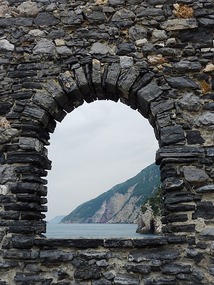
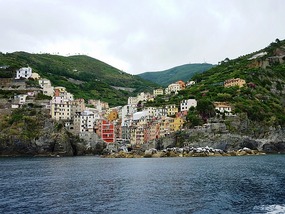
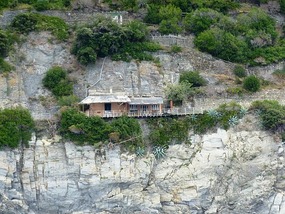
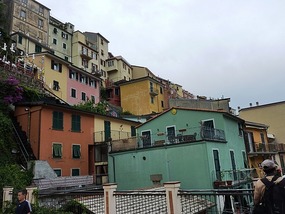
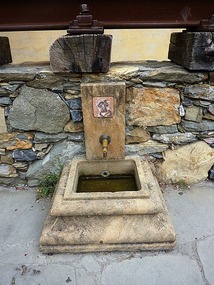
















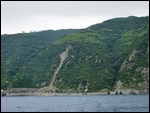
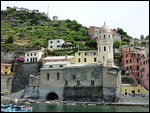
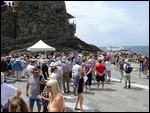
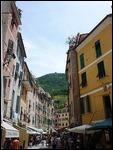

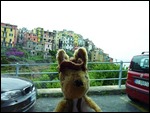

2025-05-22